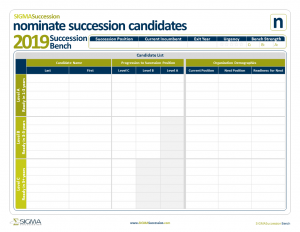Using the Succession Bench to Promote Diversity
Increase Your Company’s Diversity with Succession Planning
When challenged to add diversity to their leadership team, organizations seem to always have the same fallback response: “We’d love to promote diversity within the organization, but what can we do if no one is ready? Promote someone underqualified just for the sake of diversity?”
The problem with this sentiment is that without an intentional approach to developing diverse succession candidates, organizations will always have this built-in excuse to promote the same people they always have.
Why is Increasing Diversity an Issue?
Diversity is not just the right thing to do, it is the smart thing to do. Decision-making benefits from diverse perspectives. An organization whose leadership reflects their customer-base will be able to serve those customers better. Quite simply, diversity makes you more competitive.
So How Can Succession Planning Help?
The heart of any Succession Plan is developing talent. A formal Succession Plan delivers the process and accountability necessary to ensure we are developing a diverse talent base so that we have multiple options for upcoming leadership needs. Here’s how you can use your company’s existing resources to increase diversity:

Increasing Visibility
One of the simplest places to start is ensuring that all your talent has visibility through formalizing the development of your Succession Bench and consistently discussing that bench among your leadership team. When completing your Succession Bench, ensure that you include everyone on your team and categorize them in terms of readiness. Having a clear understanding of what your talent has and what they need will force you to challenge if you are doing enough to develop everyone.
Thinking Differently About Who You Invest In
With our Succession Bench, we categorize talent in terms of their readiness and rank them A, B, or C. If this is challenging, try rating employees on important criteria, such as their planned tenure with your company and their current readiness for promotion. Check out our At-A-Glance activity to get you started.
Coaching and development are a significant portion of our Succession Planning Implementation Services and one of the discussions we typically have is who on our Bench we should develop. There are a many variables that determine this. However, this is a great opportunity to invest in the ‘not obvious’ choice and open up opportunities for diverse candidates.
More Opportunities for Opportunity
We are all guilty of having a go-to person that has access to all the best opportunities. While they have likely earned those opportunities, the practice ensures that we will always have the same (and only one) go-to person. This tends to overload that person and exclude everyone else from opportunities to express their skills and grow.
Challenge yourself to think of others when opportunities/projects arise. Look at your bench and consider if there are responsibilities or tasks that can be given to individuals on all levels of your bench. This not only will help to engage and motivate your team, but will develop a broader number of employees into go-to employees.
I’m an optimist that believes that most leaders understand the value of diversity and want to have a diverse team of talent. However, I work with enough organizations to know that want and hope is not enough. You must have an intentional, planned approach to ensure accountability and progress toward your goals.
How SIGMA Can Help
At SIGMA, we want to help your leadership team increase your diversity with quality candidates. To learn more about diversity and succession planning, see our previous blog post here. To get started with your own plan, consider our Succession Planning Launch Series, which delivers your company a personalized succession plan tailored to help you meet your goals. Contact us for more information.